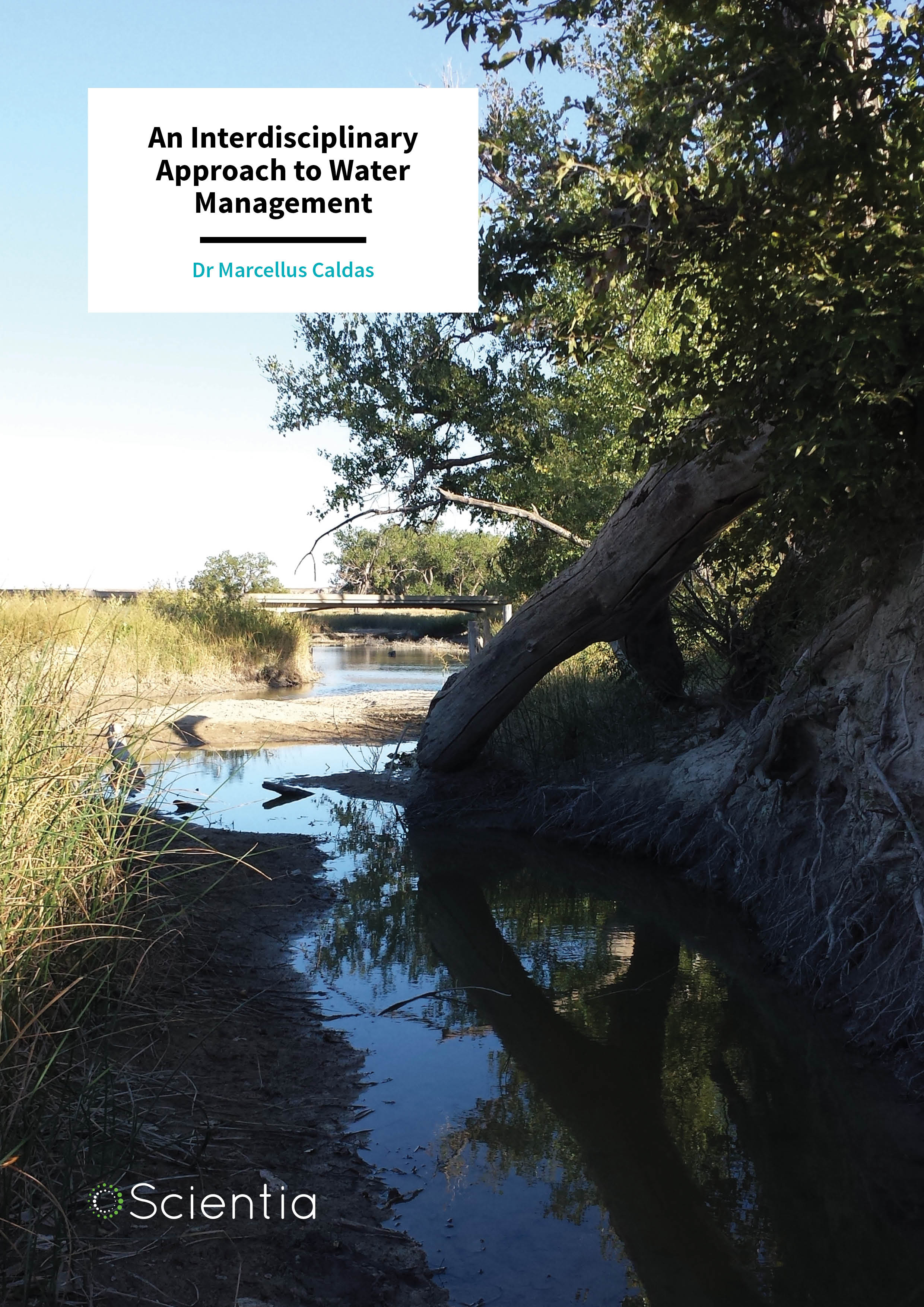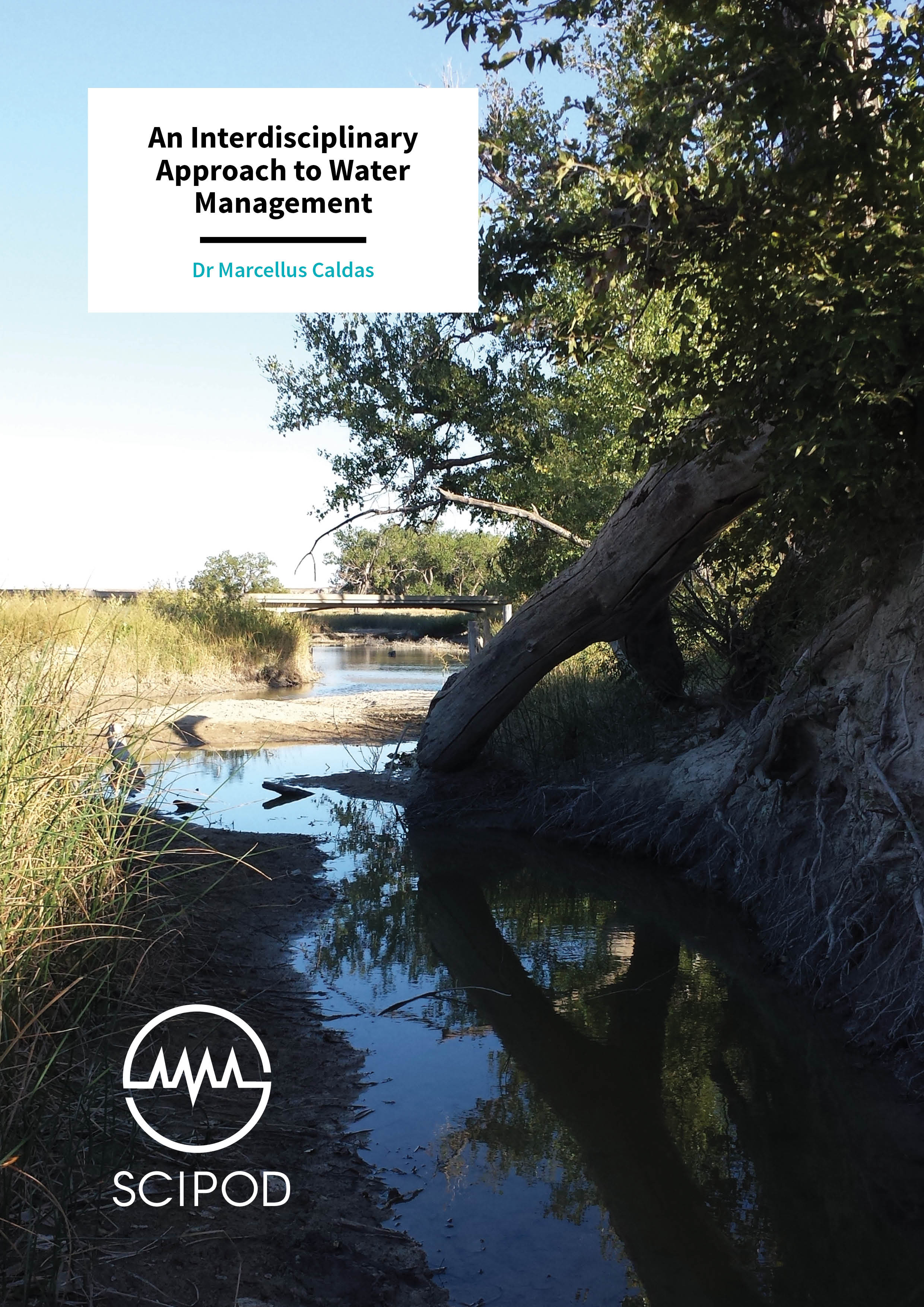Dr Marcellus Caldas | Dr Melinda Daniels – An Interdisciplinary Approach to Water Management
According to the WHO, half of the world’s population will be living in water-stressed areas by 2025. Therefore, managing our water resources is vital, especially in a changing climate. On that front, an interdisciplinary team from Kansas State University, led by Dr Marcellus Caldas and Dr Melinda Daniels from the Stroud Water Research Centre, seeks to understand how human-environment interactions and climate change affect water management and sustainability on the Central Great Plains of the United States.
A Diverse Team United by One Goal
Approximately 29% of the global population do not use a safely managed drinking-water service – that is, one located on premises, available when needed, and free from contamination. As climate change and its effects continue to grip the planet, the WHO estimate that half of the world’s population will be living in water-stressed areas by 2025. These statistics certainly emphasise the importance of being water wise and preserving the resources we have for future generations.
Preserving water resources requires better water management practices. However, understanding and insight is needed to make sure that water management, along with the associated decision-making and policy, is effective. Dr Marcellus Caldas of Kansas State University is part of an interdisciplinary team that includes more than nine researchers across three colleges and six departments – who are working to gain this understanding and insight.
What is notable about their goal is that it seeks to develop a more holistic approach to water resource management – one that incorporates many different viewpoints and areas of expertise. In fact, from the outset, Dr Caldas has emphasised the need for such an approach. ‘These are the kind of problems you cannot solve in just one discipline,’ he says. ‘One factor affects another. Each person is connected in his or her own field and contributing a piece to solve this puzzle.’
The puzzle they are trying to solve is how to better manage the water systems of the Central Great Plains, located in the central and southern region of the United States. As team member and agricultural economist Dr Jason Bergtold says, their main goal is to ‘better understand the social, economic, biological and environmental linkages between ourselves and the environment and how we can manage our natural resources.’ This sentiment again highlights the need for a more holistic approach to meet the challenge – hence the formation of an interdisciplinary team.
‘These are the kind of problems you cannot solve in just one discipline. One factor affects another. Each person is connected in his or her own field and contributing a piece to solve this puzzle.’
Managing the Watersheds of the Central Great Plains
A watershed is an area of land that catches precipitation and channels the water to local streams and rivers, and eventually into larger bodies of water such as reservoirs, bays, or the ocean. There are many watersheds in the Central Great Plains, such as the Smoky Hill watershed, on which the local community relies. However, the watersheds in the region have had longstanding water quality and quantity concerns because of extreme climate variability, intensive water use and land use. ‘Both human and natural systems in this area depend on adequate freshwater for survival,’ explains geographer Dr Melinda Daniels, ‘but they are fragile, quickly and dramatically affected by climate fluctuations, and potentially face disaster given either natural or human-driven climate scenarios.’
Biologist Dr David Haukos also explains that, ‘variations, impacts or loss of water in Great Plains water systems have the capability of producing cascading effects.’ Therefore, members of the team have focused their research on understanding the hydrological characteristics of the region and feeding that back into model development and policy creation. This, in turn, ensures that any subsequent decisions regarding water management and sustainability in the region are effective. If successful, these insights could also help other nations around the world to improve their water management protocols.
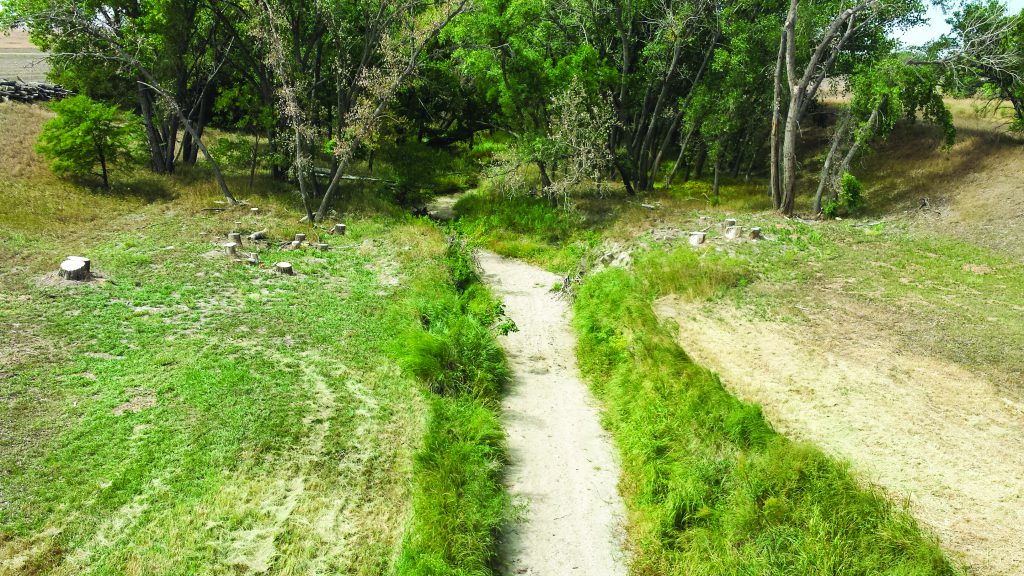
CREDIT: Sarmistha Chatterjee
The Importance of Research and Regular Feedback
In a study carried out by team member Dr Aleksey Sheshukov and his colleagues, the researchers made the point that, ‘hydrologic observational data are required to conduct implementation and assessment of watershed and water resource management practices, including natural resource planning, flood and drought mitigation, and reservoir operation among other conservation efforts.’ Furthermore, if environmental outcomes are to be achieved, then data collection systems need to be regularly reviewed and improved.
To highlight that this is very much the case, consider the findings of the research described above. To give some background, a network of land-based weather stations has been typically used as a primary source of climate input for agro-ecosystem models on the Smoky Hill watershed. However, the research team’s analysis showed that an alternative data collection model generated smaller bias and could significantly improve simulated streamflow estimates. Clearly, if these improved estimates were to be included in models, and the subsequent decisions in regard to managing the resource, then outcomes would likely be better for both the environment and land owners.
Consider another example. In another research project, team members Dr Daniels and Dr Sheshukov analysed the flow of a semiarid river basin in the Central Great Plains from 50 and 100‐year projected climate data. The projected data for these two periods were then compared with historical data to determine changes in flow.
The results from this analysis indicated a significant alteration of water flow. Their findings were also consistent with previous studies of climate change and flow alteration in other regions, predicting shifts in flood timing and magnitudes, significant influences on ecological processes, and potential altering of aquatic ecosystems. This in-depth knowledge of both the historical and predicted conditions of the watershed and associated flow systems would obviously be useful in developing subsequent water resource management practices.
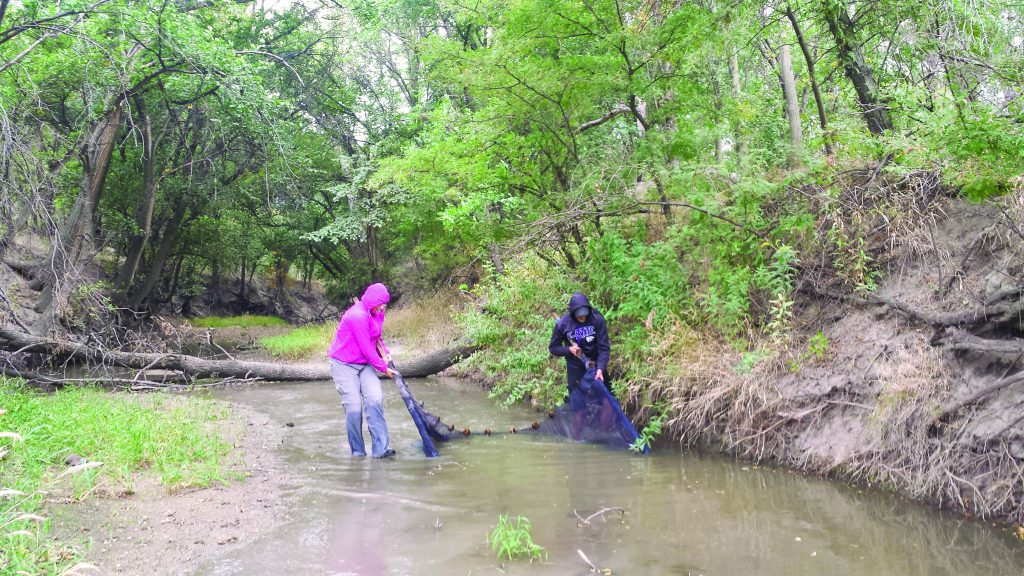
CREDIT: Sarmistha Chatterjee
Incorporating Social-Cultural Perspectives
Incorporating social and cultural perspectives into environmental decision and policy making is also important, yet often neglected. As was highlighted by Dr Caldas and his colleagues in an opinion article published in 2015 in the Proceedings of the National Academy of Sciences, ‘no matter how extensive and sophisticated our biophysical knowledge, policy institutions, and economic projections, any facet of the environment is difficult to sustain if stakeholder groups are using different cultural frames, and hence meanings or interpretations, of it.’
It has always been the goal of the team, therefore, to develop practical measures to ensure that these social-cultural inputs are understood and taken into consideration. As engineer Dr Jessica Heier Stamm says, ‘my hope is that our research will lead to advances in the extent to which local culture and decision objectives can be represented.’
Social science, therefore, is an important part of the equation. In research published in 2017, sociologist Dr Matthew Sanderson highlighted that understanding the role of humans in water systems is necessary to address water resource problems. In response to that challenge, he and his colleagues developed a model that incorporates elements of social science into environmental planning. By doing so, the model captures diverse social and cultural feedback from the human environment, and frames this against feedback from the natural environment. In addition, a model like this could ensure that the scope of decision making is extended from the individual level, which is not necessarily representative, to the group or system level.
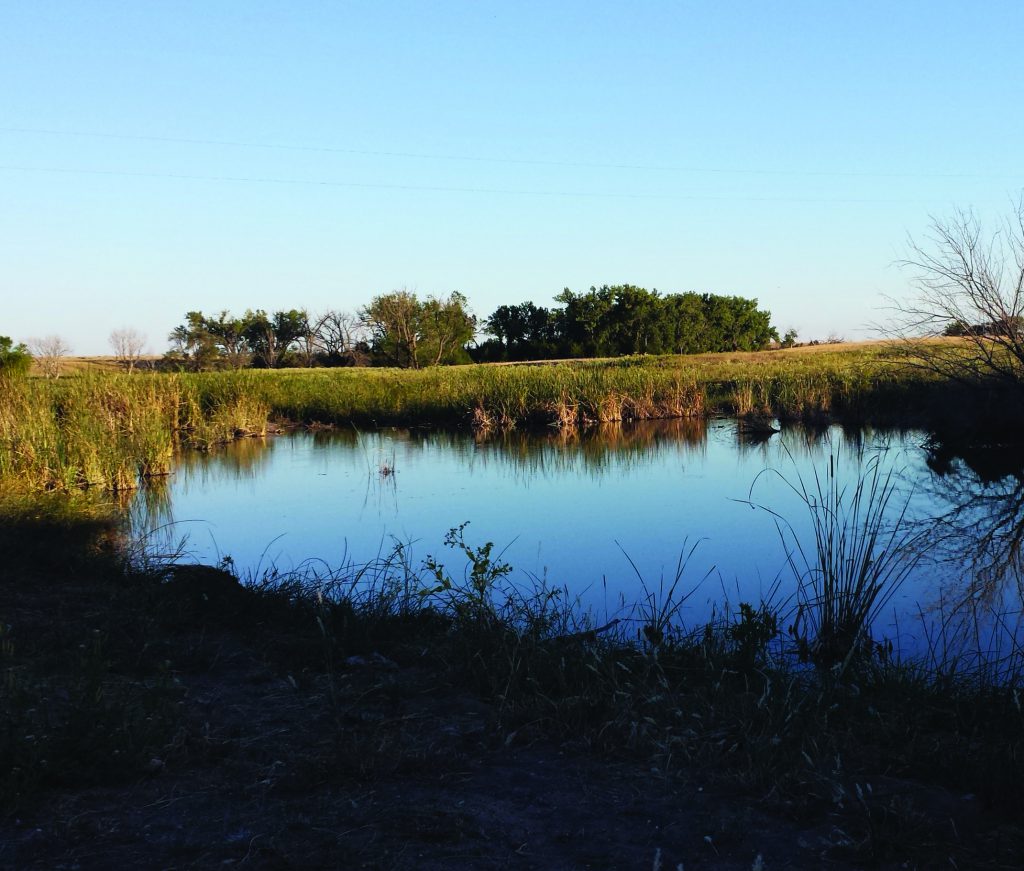
CREDIT: Sarmistha Chatterjee
The Merits of an Interdisciplinary Approach
One of the notable feature of the team’s work is that it brings together experts from completely different areas of study. The researchers, who include geographers, engineers, biologists, economists and sociologists, have collaborated to reach a common goal – to prevent future water scarcity and water quality problems on the Central Great Plains of the United States.
Commenting on the success of this project, ecologist Dr Martha Mather states that ‘the unusual and diverse combination of expertise exhibited by our research team has produced a unique dataset that meshes ecological, hydrological, geomorphological, sociological, and economic data on water systems in the Great Plains. This unprecedented dataset can produce new insights and potentially even create transformative paradigms about human impacts on resources and better ways to communicate interdisciplinary research to scientists, the public, and agricultural stakeholders.’
Indeed, the research team, in bringing together their different areas of expertise, has developed a more holistic approach to environmental management – one that centres on robust scientific research and effective models for incorporaing social-cultural perspectives. The team will look to extend the applications of their models and use them to inform better policy. They will also continue to collect data to help support effective decision and policy making. Other members of the team, such as Dr Joe Aistrup, are committed to addressing issues pertaining to irrigational water use and developing graduate education programs so that students better understand water sustainability in the region.
Although approaching their research from a whole range of different angles, the team’s goal is unified, and it is clear. They hope to improve water quality in the Central Great Plains to ensure that clean water is available to future generations and that aquatic biodiversity is protected. Their interdisciplinary approach to this challenge is most notable and is sure to continue to inform better decision and policy making both in the Central Great Plains and the rest of the world.
Meet the Researchers

Dr Marcellus Caldas
Dr Marcellus Caldas is an economic/environmental geographer and K-State leading principal investigator. Dr Caldas leads the land-use/land-cover and water-use decisions and directly supervises human systems.

Dr Melinda Daniels
Dr Melinda Daniels is an interdisciplinary Geographer specialising in fluvial geomorphology. She is the Stroud Water Research Center leading principal investigator for the research team and contributes to the hydrological, biological and geomorphological research components.

Dr Jason Bergtold
Dr Jason Bergtold is an economist studying social, economic and ecological factors impacting community support of environmental policy, as well as land-use change and management.

Dr Matt Sanderson
Dr Matt Sanderson helped to develop the cultural facets of the human systems component of the integrated model.

Dr Martha Mather
Dr Martha Mather’s contribution to this collaboration has been to quantify instream biodiversity and link fish data to hydrology, land-use, and human systems.

Dr Jessica Heier Stamm
Dr Jessica Heier Stamm leads the effort to develop a computational framework for policy analysis to incorporate stakeholders’ decision-making perspectives and biophysical system models.
E: jlhs@ksu.edu

Dr David Haukos
Dr David Haukos is a wildlife ecologist concentrating on the relationships among landscape composition, population demography, and animal space use.

Dr Aleksey Sheshukov
Dr Aleksey Sheshukov is a quantitative hydrologist specialising in evaluating the impacts of climate variability and land-use change on watershed water-quality and surface hydrology with computer models.

Dr Joe Aistrup
Dr Joe Aistrup is a political scientist focused on the intersection between water policy and communities in water abundant and water scarce environments.
FUNDING
This research was funded by the National Science Foundation (NSF #1313815 Dynamics of Coupled Natural and Human Systems).





